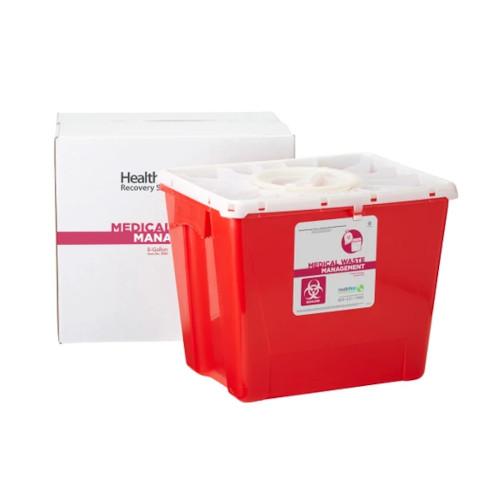Comfort at Your Doorstep: Situating Reliable Medical Waste Removal Near Me
Comfort at Your Doorstep: Situating Reliable Medical Waste Removal Near Me
Blog Article
Understanding the Various Kinds Of Garbage Disposal Methods
In the world of waste administration, the variety of disposal methods available today is huge and varied, each method serving a distinct objective in addressing the challenge of garbage disposal. click here. From reusing approaches that aim to give brand-new life to products, to the detailed procedures of contaminated materials management, the landscape of garbage disposal is complex yet essential for environmental sustainability. Understanding the subtleties of these various techniques not just clarifies the significance of responsible waste monitoring yet additionally motivates us to rethink our strategy in the direction of garbage disposal in a swiftly evolving globe

Recycling Approaches
Reusing approaches are important for lasting waste monitoring techniques in both household and industrial settings. medical waste disposal. By executing effective recycling methods, a considerable amount of waste can be drawn away from landfills, saving natural deposits and lowering the ecological influence of manufacturing procedures
In household locations, curbside recycling programs play a crucial duty in motivating households to separate recyclable materials from general waste. Products such as paper, plastics, glass, and steels can be arranged and accumulated for processing right into brand-new items, decreasing the need for resources and energy-intensive production procedures.
Industrial facilities additionally depend on reusing approaches to lessen waste generation and promote a circular economic situation. By applying closed-loop systems, services can reuse products within their manufacturing processes, lowering costs and environmental impact. medical waste disposal. Furthermore, commercial recycling programs typically involve collaborations with specialized recycling centers to guarantee that products are appropriately arranged, refined, and rehabilitated into the supply chain
Composting Methods

Aerated fixed stack composting involves mixing natural waste products in a big heap and regularly transforming it to guarantee appropriate aeration. This technique is well-suited for smaller-scale procedures and homes.
In-vessel composting involves positioning organic waste in a shut container with regulated conditions for temperature and aeration. Windrow composting consists of creating long rows of natural waste and on a regular basis turning them to advertise disintegration - medical waste removal service.
Garbage Dump Disposal
Landfill disposal is a frequently used method for handling waste that can not be reused or composted. It entails hiding waste in designated areas of land, with appropriate precautions to stop ecological contamination. Landfills are crafted facilities created to isolate waste from the surrounding environment. The waste is compressed and covered with soil daily to minimize smells, prevent parasites, and decrease the spread of trash. Modern landfills are geared up with protective linings and checking systems to protect against leak of harmful materials right into the soil and groundwater. Methane gas, a by-product of breaking down natural waste in garbage dumps, is usually click here collected and made use of as a resource of sustainable energy. Despite innovations in land fill technology, problems stay about the long-term ecological influences, such as groundwater contamination and greenhouse gas exhausts. Initiatives to decrease dependence on landfills include advertising waste reduction, recycling, and checking out alternative waste disposal techniques to lessen the environmental footprint connected with standard landfill disposal practices.

Waste-to-Energy Incineration
Incineration of waste for power generation is an approach significantly being thought about as a choice to standard landfill disposal techniques. Waste-to-energy incineration involves the burning of waste products at high temperatures, typically in specialized facilities made to produce electrical power or warmth with the procedure - click here. This technique not only reduces the volume of waste that would otherwise be destined for land fills however likewise utilizes the warm produced during incineration to create power
One of the essential benefits of waste-to-energy incineration is its capacity to generate power while reducing the ecological impact contrasted to conventional landfill disposal methods. By converting waste into power, this approach helps in minimizing greenhouse gas emissions and reliance on fossil fuels for energy generation. Additionally, waste-to-energy facilities are furnished with sophisticated air contamination control modern technologies to alleviate prospective toxic wastes released during the burning process.
Hazardous Waste Administration

Taking into consideration the critical importance of responsible waste management techniques, particularly in the realm of ecological sustainability, the emphasis now shifts towards the elaborate domain name of Contaminated materials Management. Harmful waste presents substantial dangers to both human health and wellness and the setting, requiring specific handling and disposal methods. Usual examples of harmful waste include chemicals, batteries, chemicals, and digital waste.
Unsafe Waste Management entails the identification, collection, transportation, treatment, and disposal of products considered dangerous or possibly dangerous. This process needs adherence to rigorous regulations and guidelines to alleviate negative influence on environments and public health. Various techniques are used in managing hazardous waste, consisting of recycling, safe and secure garbage dumps, encapsulation, and chemical therapy.
Correct Dangerous Waste Management is critical for stopping contamination of soil, water resources, and air pollution. It is crucial for markets, research laboratories, medical care centers, and other generators of hazardous waste to execute robust management approaches, training programs, and emergency feedback prepares to ensure the risk-free handling and disposal of these materials. Failure to handle dangerous waste suitably can have far-ranging consequences, underscoring the significance of attentive and accountable practices in this field.
Verdict
In final thought, waste disposal strategies play an important role in handling and lessening the effect of waste on the setting. It is crucial for people and markets to comprehend the various waste disposal methods available and choose the most suitable approach for lasting waste administration.
In the realm of waste administration, the range of disposal techniques offered today is large and differed, each method serving an unique purpose in dealing with the challenge of waste disposal. click here. From recycling approaches that aim to provide brand-new life to materials, to the elaborate procedures of unsafe waste monitoring, the landscape of waste disposal is complex yet essential for environmental sustainability. Comprehending the nuances of these different methods not just sheds light on the importance of accountable waste administration yet also triggers us to rethink our approach in the direction of waste disposal in a quickly developing globe
Efforts to lower reliance on landfills consist of promoting waste reduction, reusing, and discovering different waste disposal methods to minimize the environmental impact connected with traditional landfill disposal methods.
It is important for industries and individuals to recognize the different waste disposal strategies available and pick the most proper method for sustainable waste management.
Report this page